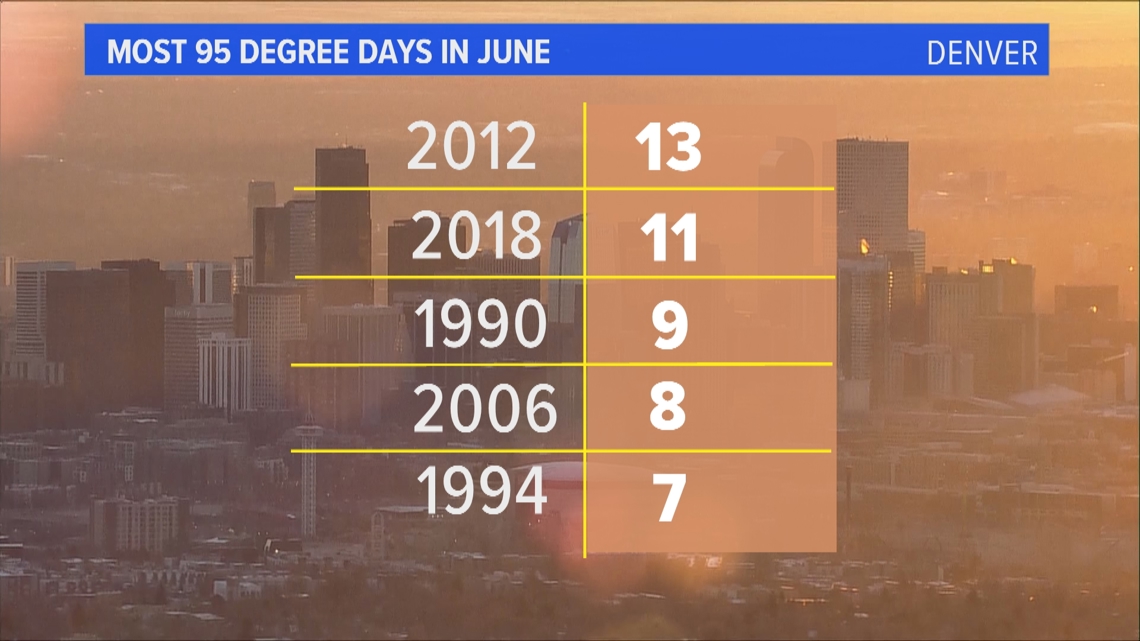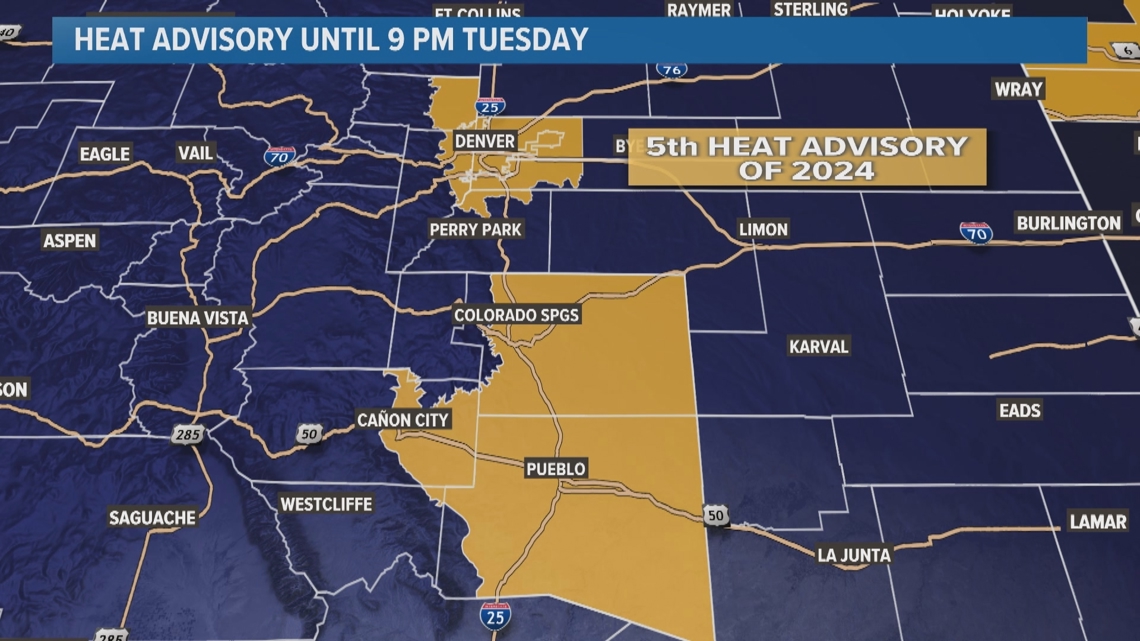BOULDER, Colo. — Unusually hot temperatures in Colorado this June have meteorologists concerned about people’s health.
“If you’re exposed to those conditions for a prolonged period, that puts a lot of strain on the body and that’s where heat related illnesses creep up,” said National Weather Service (NWS) meteorologist Greg Heavener.
He said Monday was already the sixth day above 95 degrees in Denver and Tuesday will be the seventh. It’s only been this hot this early in the summer five other times in history.
“That’s where I think we have issues with the heat advisory being needed because folks haven’t adjusted to that intense heat just yet because we are still early in the season for that extreme heat, ” said Heavener.


The NWS issues an alert called a heat advisory when the temperatures might reach dangerous levels.
A record breaking fifth heat advisory of the year has been issued, which runs through Tuesday night at 9 pm. That's the most ever issued this early in the summer. There were two issued in 2022 and one in 2017. Heat advisories though are fairly new to Colorado because the weather doesn't normally rise to the traditional criteria for a heat advisory.


Colorado frequently reaches the high temperature thresholds of near 100 degrees, but the minimum temperature threshold typically used for a heat advisory is 75. The minimum temperature in Denver, for example, has never stayed above 75 degrees in the last 100 years.
Another popular criteria used to issue a heat advisory in other states is the heat index which incorporates the relative humidity. And Colorado's climate is a dry heat so the heat index does not accurately describe the level of heat.
So the local NWS offices in Colorado had to find a way alert the public to potential hazardous heat without using the minimum temperature threshold and the heat index, because they noticed a significant rise in heat related illnesses being reported in recent years.
That's where the NWS Heat Risk tool comes in. Heavener said they started using it in 2022. It takes the weather forecast, accounts for the time of year, and calculates an impact on human health.
“So actually there are health cases brought into that system saying at these levels you’re going to have possibly this number of hospitalizations due to heat related illnesses," he said. "When the heat risk is high in a certain area, we use that information combined with other considerations to issue heat advisories."
More from Cory Reppenhagen:
SUGGESTED VIDEOS: Colorado Weather

